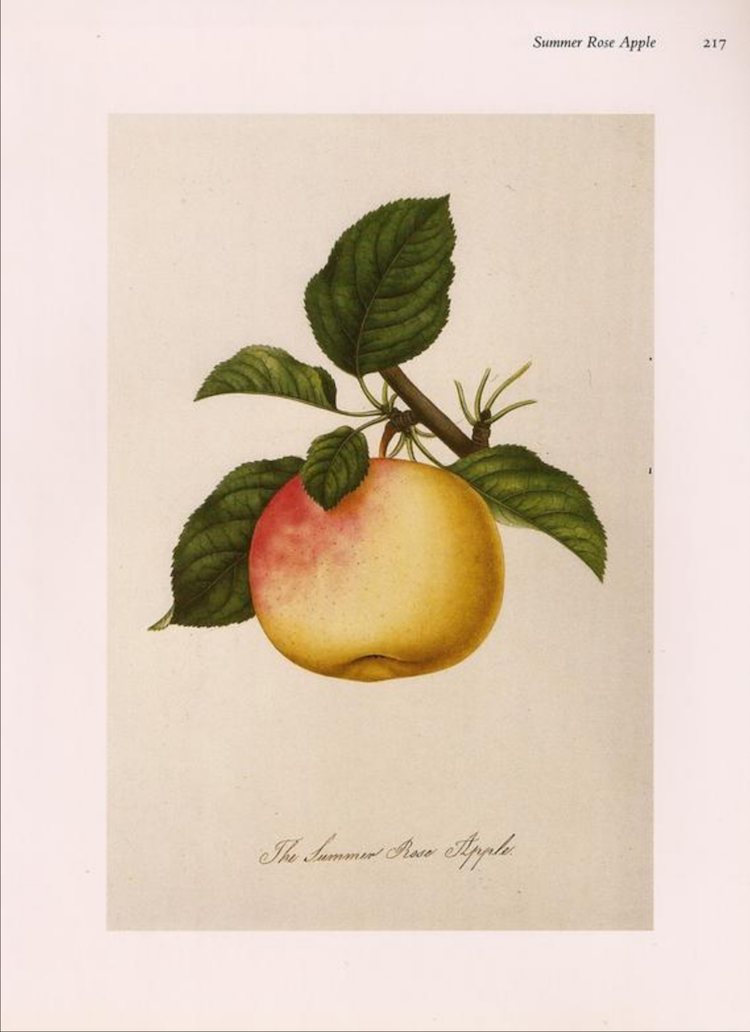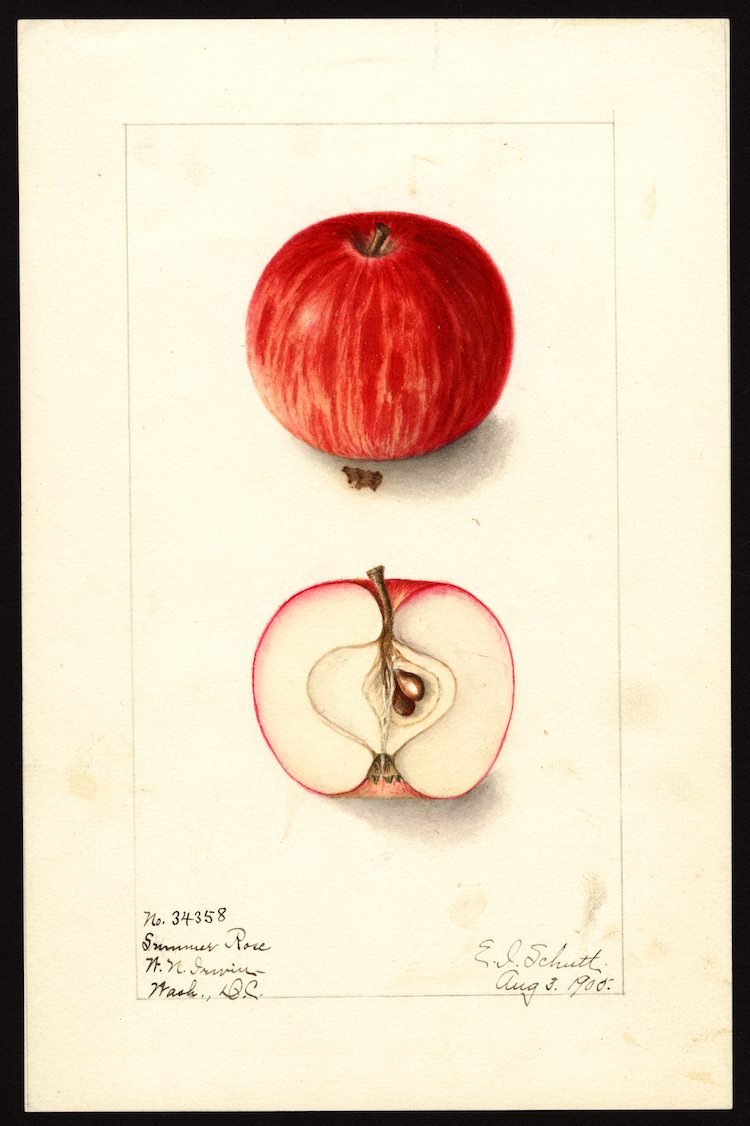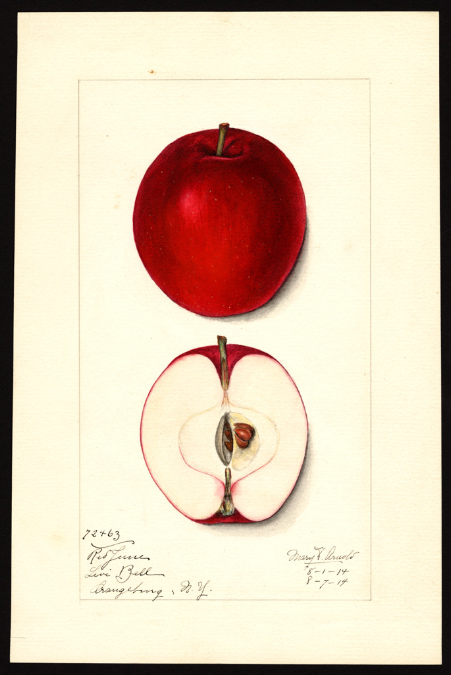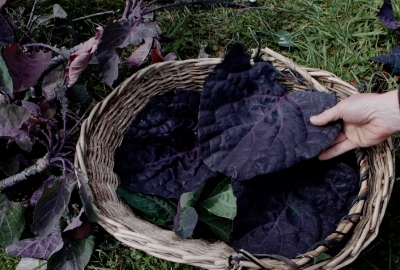I have over 50 seedling apples fruiting this year, most for the first time. The best way for me to do content on tasting these is to do it how I normally do it, which is go out there and taste my way through the rows.
There are some interesting and potentially promising ones and certainly some stuff to use in making a next generation of crosses. I’ve also observed though that I have probably been right all along that there is a group of undesirable traits for a dessert apple, which follow the red fleshed trait around. I am assuming that some of these traits can be teased out and eliminated while retaining a deep red flesh. The classic red fleshed apple is acidic, soft, and low-ish in sugar. I’m pretty sure there is a trend where the redder the flesh, the more those are likely to be present.
The only thing to do is take these new fruits and make second generation crosses. some will be with other red fleshed apples or crosses and some possibly with other dessert apples. I’ll be thinking about which crosses to make once I taste these all and get an idea of what they are like.
As for the average apple in the row, they are generally edible, if not always good. Spitters are uncommon, but there are a few. Many are as good or better than the average apple I have growing here, about 80% of which I will probably end up culling out for low quality. A lot of them have just a hint of pink in the flesh and others have none, even though the great majority have one red fleshed parent. I’m hoping that when crossing apples that both have red flesh, I can increase the percentage of seedlings that show the trait. Many are very sweet, but the more red flesh, the less sweet they tend to be I think.
Scab is very bad on some and common in general, but I have some nice apples that look scab resistant if not practically immune. Even apples with two very scab prone parents can turn out scab free I learned. That is encouraging. I have not made crosses with two scab free parents yet, but I’m suspecting that they won’t always be scab free. But I’ve really been trying to use more scab resistant genes, because it is a problem for me and others, and it must help to add it to the mix more. Also, many red fleshed apples, including I believe all the Albert Etter red fleshed apples I have grown, seem very scab prone on a scale of 1 to 5 I’d a say
Pink Parftait 4 to 5
Rubaiyat 5
Grenadine 3 to 4
I do have some not very scabby or scab immune seedlings that are quite red inside, so I don’t think scab susceptibility travels with the rest of that package of undesirable traits I mentioned earlier. If I’m even right about that trend but I think I probably am.
As the season progresses. I’ve been very busy with winter preparations and homestead life in general. I’ve also had to take some time to do other stuff for money, so that takes time away from making content and working on real stuff that matters.
























